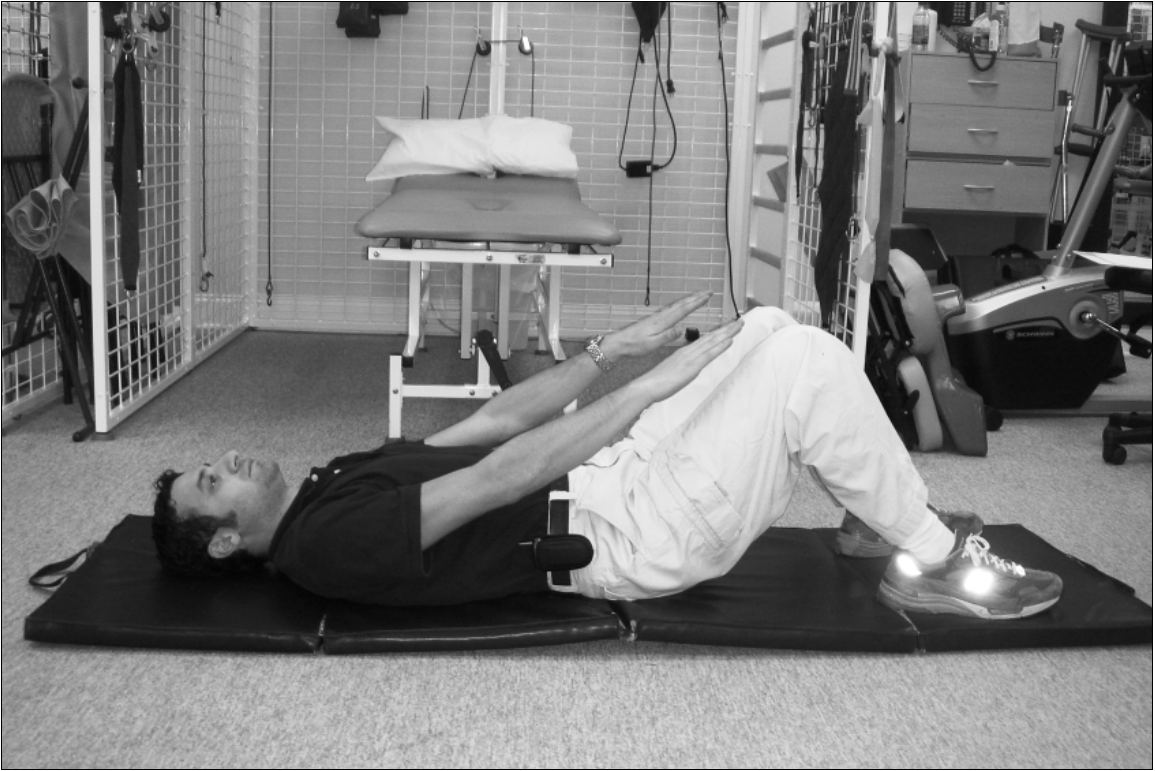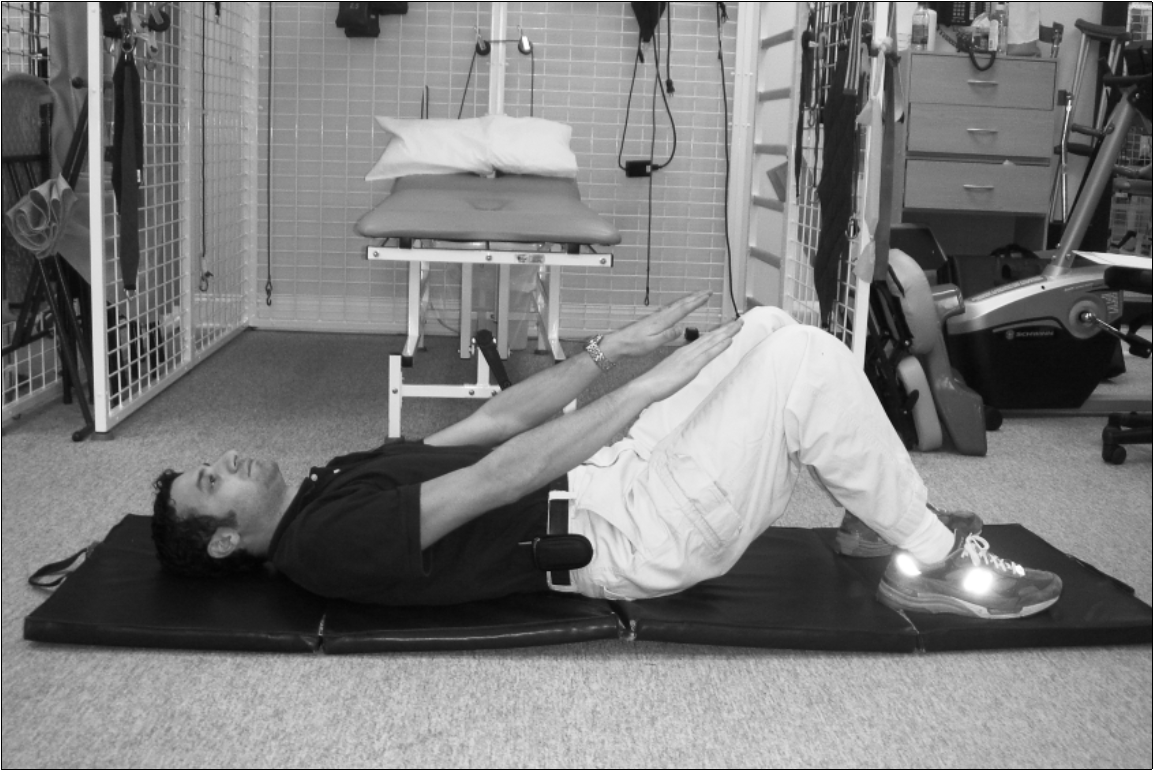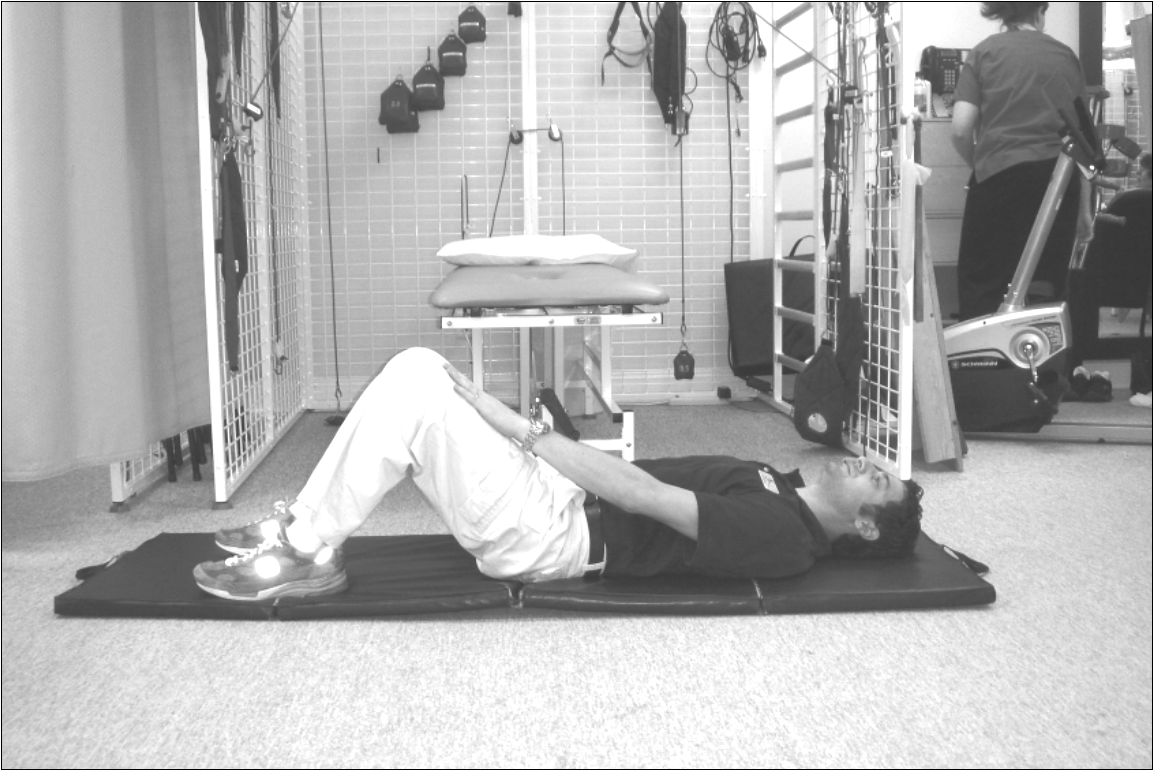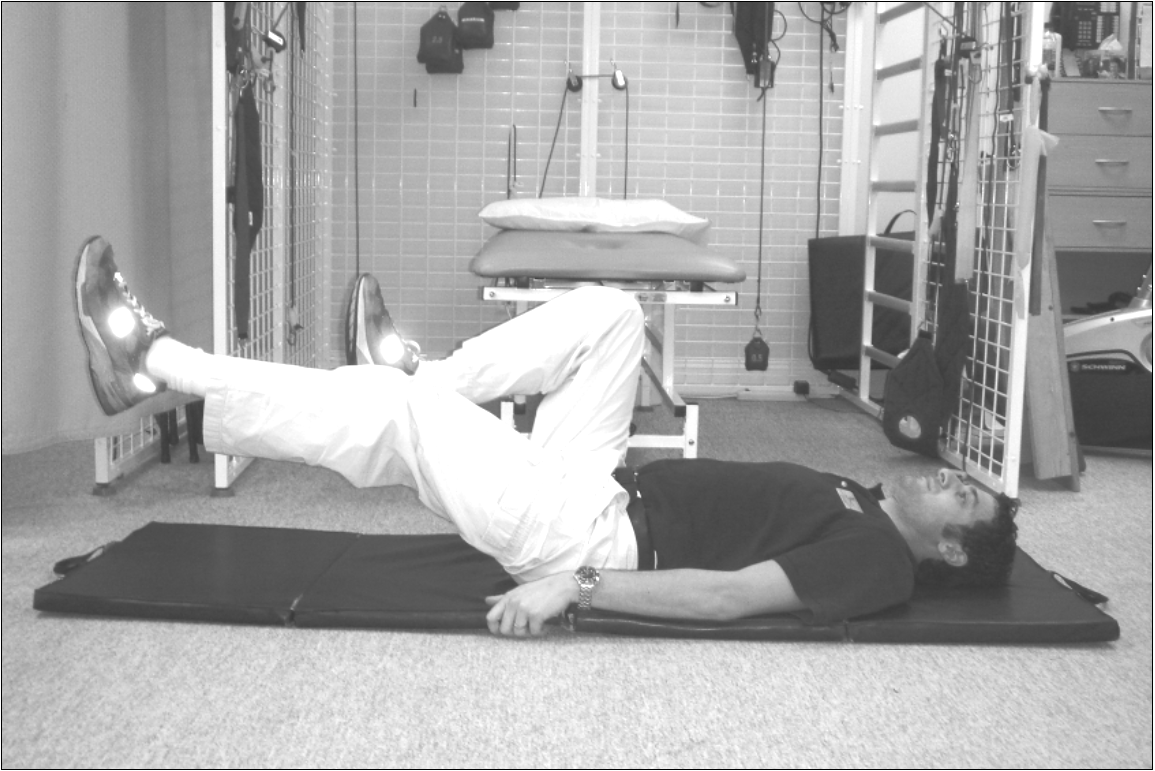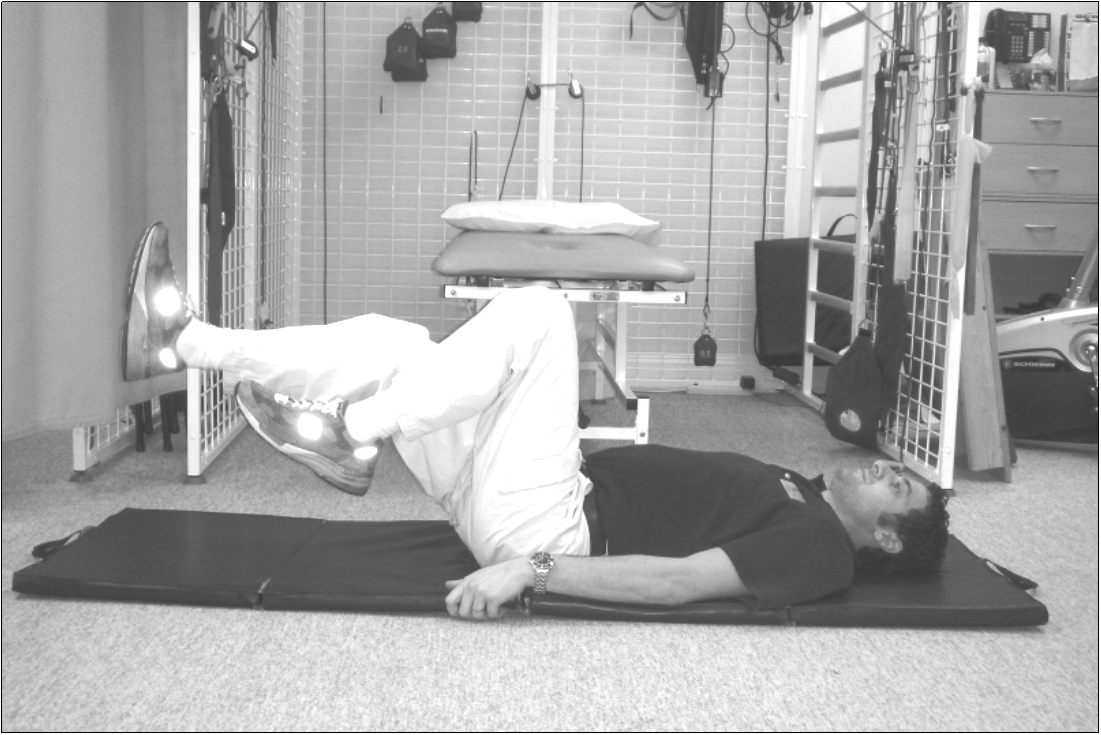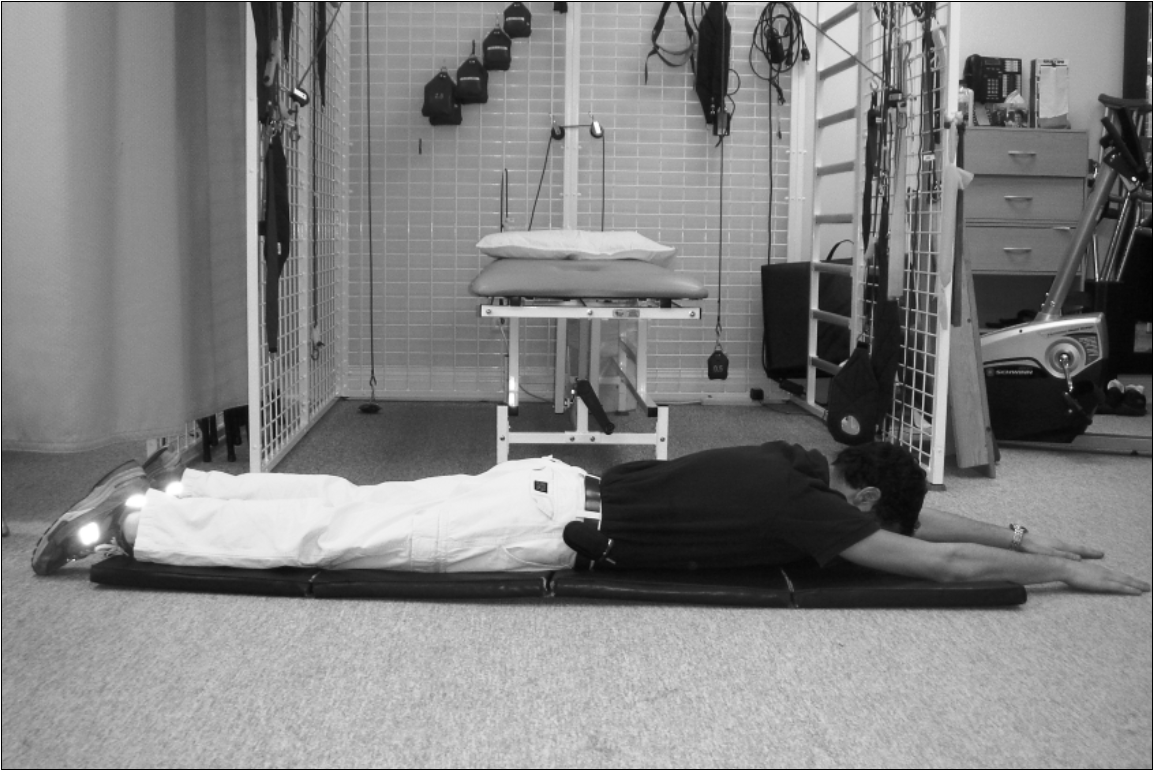
Lumbar Stabilization
CAUTION:
Some of these exercises can produce anterior pelvic rotation while others can do the opposite action. Each exercise has to be separately addressed to your specific problem. I strongly recommend a prior clinician’s assessment. In some cases they can irritate your symptoms. If you experience an increase and/or persistence in back pain, stop. Consult it with your therapist.
Lumbar Stabilization Exercises
Abdominal Bracing
Starting position: Supine, hookline position
Ending position: Tightening lower abdominal muscles.
Partial Sit-Ups with Side Rotation
Starting position: Supine, hookline position, arms reaching forward.
Ending position: Sit up, rotate your trunk, arms reaching toward rotated side
Partial Sit-Ups
Starting position: Supine, hookline position, arms reaching forward.
Ending position: Sit up, head straight back, eyes to the ceiling. Do not bring chin to chest.
Bridging with Both Feet on the Floor
Starting position: Supine, hookline position.
Ending position: Raising hips up.
Iliopsoas Strengthening
Starting position: Supine, hookline position, hand against thigh.
Ending position: Hip flexion with pushing against hand resistance.
Leg Thrusts
Starting position: Supine, both legs off the floor with one leg flexed in hip, other extended.
Ending position: Flexed leg is trusted forward. Straight leg is flexing.
Prone With Opposite Leg Lifts
Starting position: Prone, arms and legs extended.
Ending position: Raising alternative legs.
Quadruped With Leg Raises
Starting position: Quadruped position.
Ending position: Alternatively raising opposite legs, holding 3 to 5 seconds. Patient can have cuff weight on his/her ankles.
Straight Leg Rising
Starting position: Supine, one leg in hookline position, opposite leg extended.
Ending position: Tightening lower abdominal muscles.
Straight Back Bends
Starting position: Standing in an upright position, weights in both hands straight down.
Ending position: Leaning forward with straight back and head up no more than 45 degrees. Avoid arching lower back.


